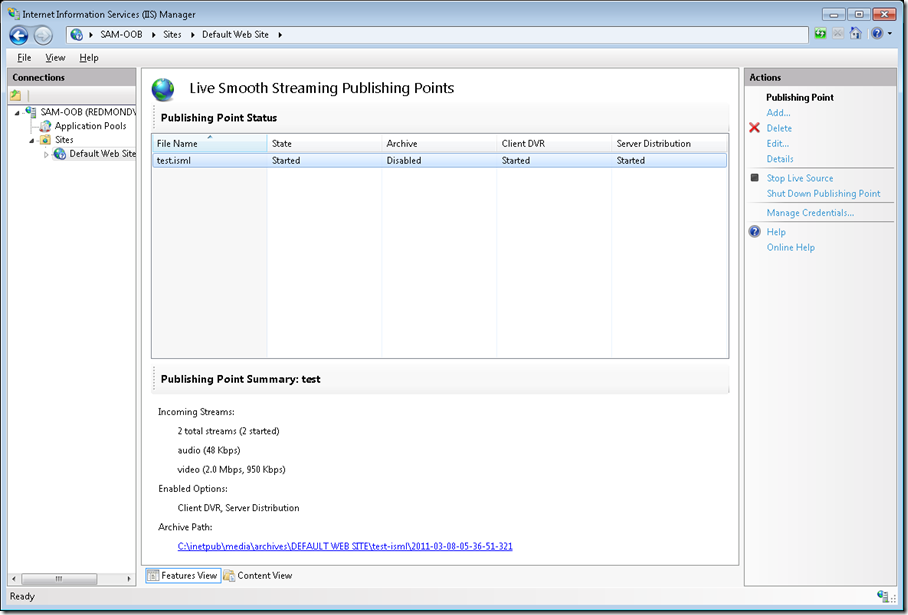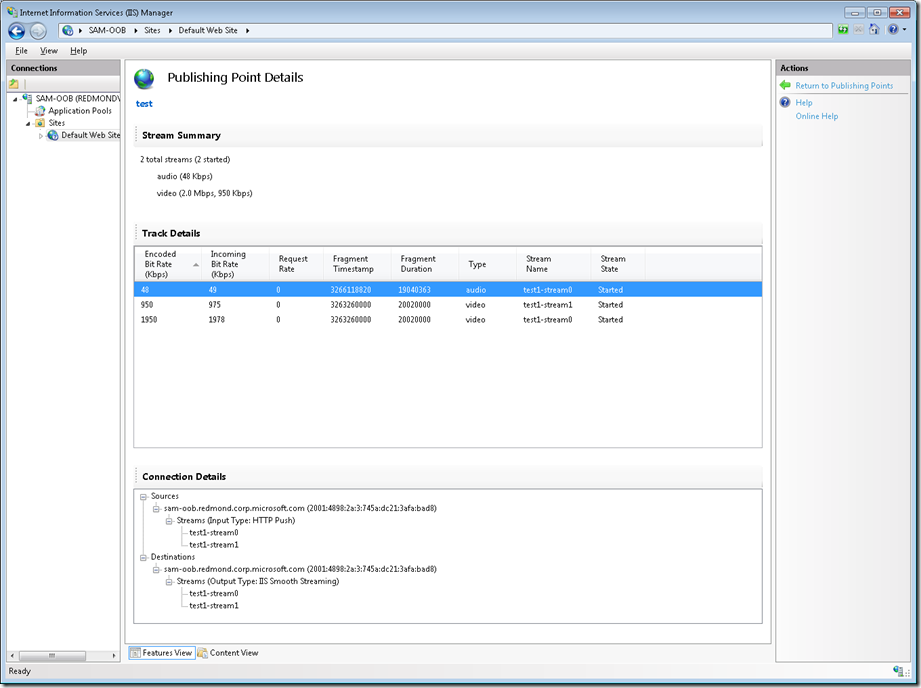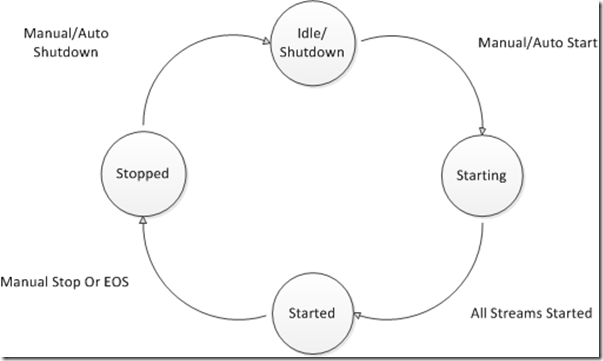How to Troubleshoot Live Smooth Streaming Issues? – Part 2 (Publishing Point UI and States)
In Part one, we discussed basic data flow and protocols being used in IIS Live Smooth Streaming. In this blog, we will discuss where all the diagnostic information for live smooth streaming is available and how to make sense out of it.
1. Publishing Point UI
The publishing point UI is the first place that you should look at when troubleshooting live smooth streaming issues. This is especially true with IIS Media Services 4.0 release which has a new detailed view about streams, tracks, fragments, etc. Please refer to my other blog here for this new UI in 4.0 release. In general, we highly recommend our customers to upgrade to IIS Media Services 4.0 release for a number of improvements. The screen capture below was done with IIS Media Services 4.0.
Publishing Point State and Summary Page
Publishing Point Detail Page
One piece of important information about publishing point is its state which is available on both 3.0 and 4.0’s UI. Understanding the publishing point state is very important for any live smooth streaming troubleshooting. Below is a diagram describing key publishing point states:
Publishing Point State Diagram
Note: In the following discussion, the term “encoder” is interchangeable with “upstream server”. They both mean where the publishing point is sourcing live data from.
- Idle/Shutdown – This is the default state for any publishing point that was just created or whose worker process just restarted. Shutting down a publishing point will also put it into “idle” state. In this state, the publishing point is doing nothing – it’s not receiving incoming streams nor is it responding to any client requests. You can edit any publishing point settings as you wish and they will be picked up when the publishing point next starts.
- Starting – Once the publishing point is waken up, either by manual start command or automatically by incoming streams if you have the option enabled, it enters the “starting” state. In this state, the publishing point is open for accepting any encoder stream but it’s not ready to serve any client request yet (manifest or fragment). Only after the publishing point successfully received the initial information from all streams would it transit into the next state “started”.
- Started – This is the state where the publishing point is fully functioning, from both the encoder and the clients’ point of view. It receives live data from the encoder, archive the content (if enabled), generating manifest and fragments to satisfy client’s requests and relaying the streams to any configured downstream publishing points. When the publishing point is in this state, normally you should be able to see constantly updating fragment information in the detailed view on the publishing point UI. However, as I described in this blog, the fact that a particular stream or the whole publishing point is in “started” state does NOT necessarily mean that it’s actively receiving data from the encoders. In Live Smooth Streaming, the state of the publishing point is decoupled from the state of each individual incoming data connections. This design allows full flexibility in redundancy and failover scenarios. The only ways to transit from “started” state to “stopped” state are manual stop or EOS (End Of Stream) signals from the encoders. If the encoders simply dropped the connections without sending EOS or reconnect with new data, the publishing point can stay in “started” state for ever.
- Stopped – This is a state that often confuses some users especially who have long time experience with traditional live streaming servers. I have a full blog here just to discuss why this state is important. When a publishing point is in “stopped” state, it’s still “half functional”. It no longer receives any data from the encoder but it will still happily serve any manifest/fragment requests from the clients. Basically this is the pure “DVR” mode. To re-iterate what’s stated above, the only two ways to get into “stopped” state are: (1) Manual stop command (either from UI or automated RSCA calls) or (2) Encoder sending EOS for all the streams.
- Shutdown – This is the same state as “idle” state but I just want to describe a bit more here about how a publishing point can transit from “stopped” state to this state. The most common way is to do it through manual shutdown command. Another option is to automate the shutdown and restart process (only for push publishing point) with the “restartOnEncoderReconnect” option. You can know more about this option from here and here.
There are actually some other states that I didn’t discuss above just to keep the logic simpler. Those are either transitional or error states. For example, there is an “error” state that the publishing point can get into if any unexpected error happened and the operation of the publishing point cannot continue (e.g. wrong archive path set). There are two transitional states “stopping” and “shutting down” that you should rarely see unless for some reason the stop/shutdown operation is taking a very long time.
To be continued……


